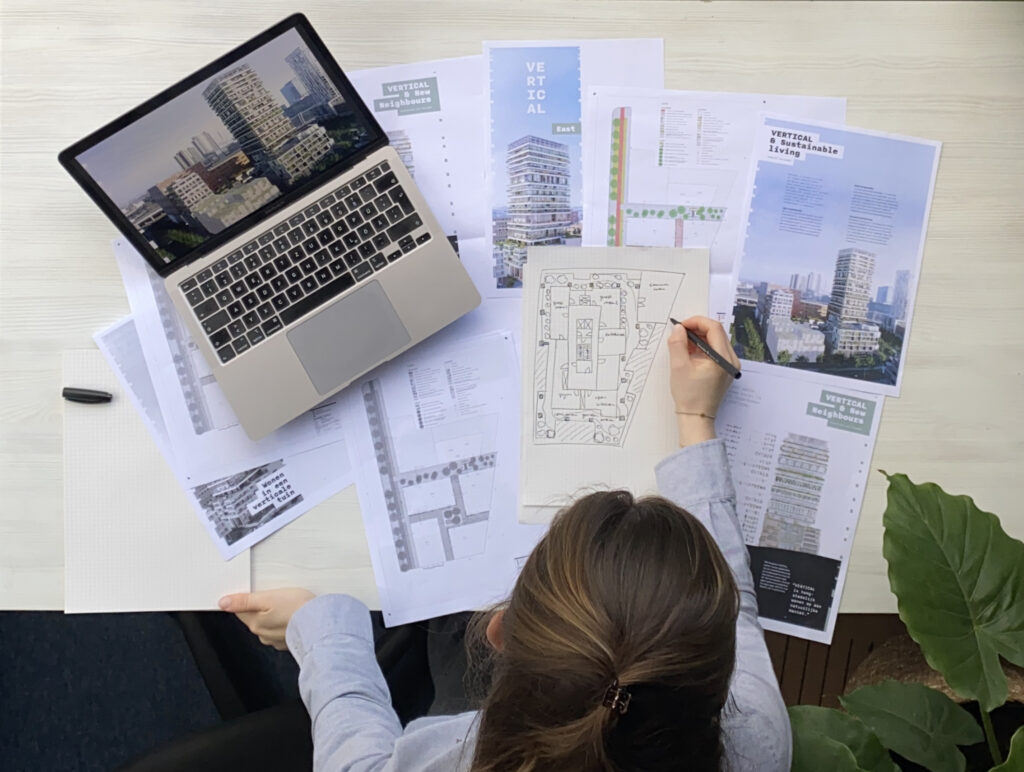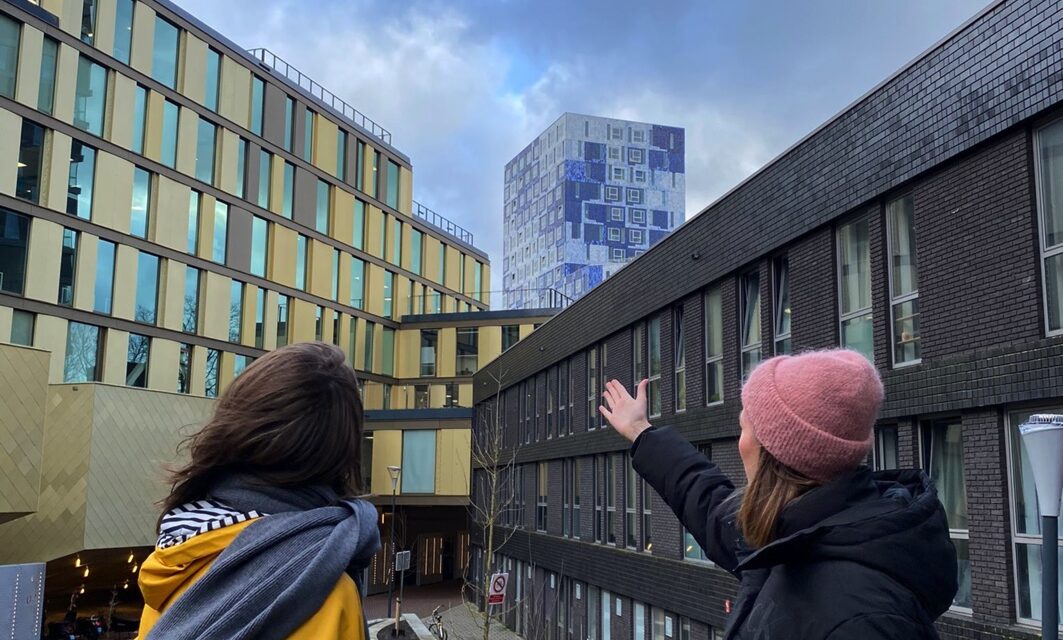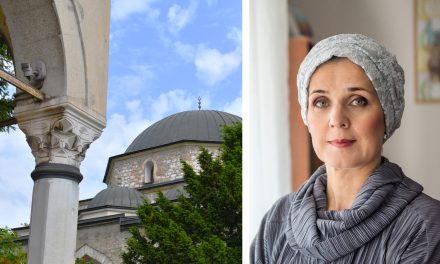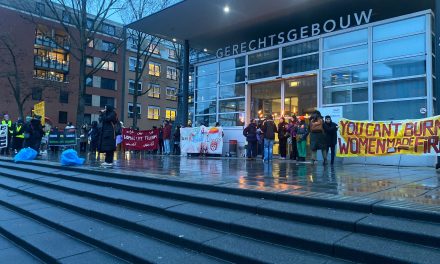Floods. Droughts. Storms. The effects of climate change are becoming increasingly visible all over the world. The construction sector has long been an industry that contributes particularly strongly to rising global CO2 emissions and thus indirectly accelerates climate change. The architects Maike van Stiphout and Angèle Tersluisen explain whether and how modern architecture can be designed sustainably.
Angèle Tersluisen, sustainability consultant at the architecture firm ee-concept, sees the problem of high CO2 emissions as the biggest challenge for architecture and the building sector now. Added to this are the increased demands of the population, which ensure that the living space per person increases continuously. This is where she sees the task of architecture to offer more luxury and sustainability with less space. The balance of the three pillars of sustainability is crucial. Ecology, economy, sociology. Sustainable architecture means affordable, less technical, resource- and space-saving building for people.
All the facts are on the table and there is nothing that could not be optimised in terms of sustainability. ‘It is the planning wisdom that we lack. Sharing this knowledge is an architectural task, and this is active climate protection’, says Tersluisen.
It is obvious that climate change can no longer be stopped even with sustainable architecture. Tersluisen is ‘looking at architecture in other climate zones because climate change is coming, and we must get ready for passive strategies to avoid overheating. Because just installing air conditioning would be the worst thing for climate change as it means we’re fuelling it’.
But is the discussion about the need for sustainable architecture so new?
No, says Maike van Stiphout, Director of DS Landscape Architects. Initiatives for sustainable building have been around since the 70s. ‘We have done it before, and it is not new. But due to climate problems like the enormous rainfall, the discussion about incorporating nature into building is now on the table’.
In her work, van Stiphout focuses more on the holistic, building that includes people as well as nature in urban planning, because “landscape architecture is the only profession that designs with and for nature”.
Landscape architecture is closely tied to urban planning, but “urbanists always look from the city towards the landscape and we do the opposite.” Architecture needs to change in many ways, says van Stiphout, starting with a change of attitude towards a minimal footprint, because the central question should be “how can I take space away, but also give something back to leave a footprint on earth that is so small that we can continue to live on earth?”

Sustainable living in a vertical forest is to become possible from this year in the ‘Vertical’ in the middle of the Sloterdijk in Amsterdam. (Foto: Annika Karoline Schleithoff)
Speaking more specifically, a good way to make cities greener and one that is already being implemented in many places is planted roofs. Maike van Stiphout sees in them an optimal way to bring more insects and birds back into the city. In addition, ‘a planted roof buffers the rainwater, which then evaporates and provides a healthier, cooler environment. I do not understand why we have not done this before, I mean it is so logical’. Angèle Tersluisen agrees, especially because a planted roof is much more economical as it lasts longer.
Cities generally need a lot more vegetation and animals, says Maike van Stiphout. That is why she talks to her clients about the specific plants she wants to use in construction. These can be bought, unlike animals and with clever planning, the animals then come by themselves.
Angèle Tersluisen says there is ‘nothing you cannot optimise in a more sustainable way’. But despite many innovations, sustainability is not yet embedded throughout the construction industry. One problem, says van Stiphout, are the processes within the construction sector. As a designer, she must pass on her design to companies that are responsible for the technical implementation. Through their changes, much of the actual idea is lost, because ‘these people do not deal with nature at all, they only see a construction site and no plants’. Maike van Stiphout and her colleagues are currently involved in the sustainable project ‘Vertical’ in Amsterdam, which is also affected by this problem. ‘If you look at Vertical, it has a lot of ambitions, but they are not achieved because of the system’.
Angèle Tersluisen also knows the problems in the planning process. ‘We have recognised the signs of the times and therefore try to think more holistically and plan together instead of one after the other’. According to Tersluisen, sustainable building ‘is not just about materials and thick insulation, but also about behavioural patterns’. More effort needs to be made to educate the public in the media and show where the big levers are.
Maybe we should change our attitude in general and think more in interaction with nature, as Maike van Stiphout does: ‘Many are urbanists of people, but we are and should be urbanists of nature’.




